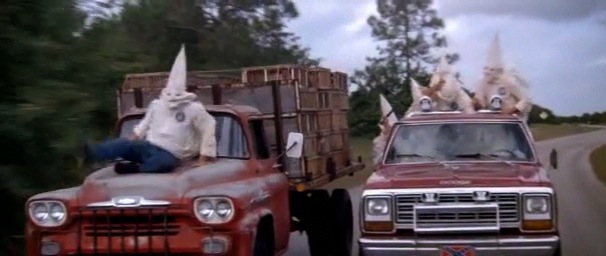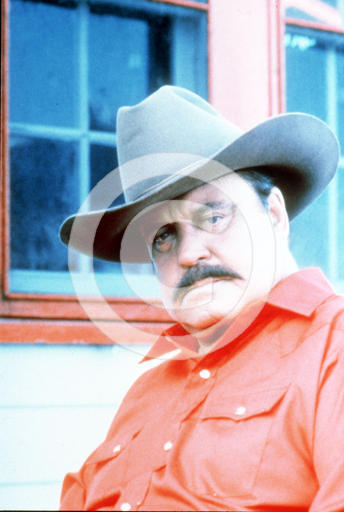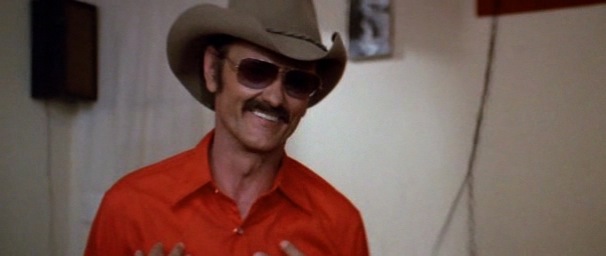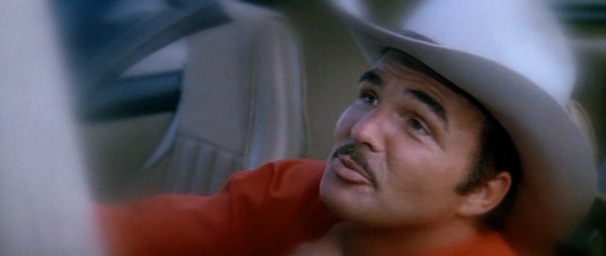The WWTTM Pantheon - Part One "Eastbound and Down, Down, Down for the Count"
 Monday, August 6, 2012 at 6:00AM
Monday, August 6, 2012 at 6:00AM WWTTM: A film so misconceived and obviously doomed for failure that it forces the viewer to ask one question: What Were They Thinking?!?!?
Smokey and the Bandit Part 3
(1983)
Synopsis
After twice failing to get his hands on the legendary speedster known as Bandit, Sheriff Buford T. Justice (Jackie Gleason) has decided to retire and move to Florida with his simple-minded son, Junior (Mike Henry). Almost immediately bored, he decides to return to Texas, but before he can leave, the father and son team of Big and Little Enos Burdette (Pat McCormick and Paul Williams) compel him to make a bet. If he can make it back home from Florida in 35 hours, he wins $250,000, but if he can’t they get his badge. The Burdette’s aren’t above cheating to win, but when their roadblocks prove less than reliable, they call on the Bandit’s partner-in-crime, Cledus Snow (Jerry Reed), who seizes the opportunity to literally step into his hero’s shoes. Partnered with a hitchhiker named Dusty Trails (Colleen Camp) he repeatedly steals the plastic fish Sheriff Justice needs to have to win the bet, but he ends up letting the sheriff win, because, “You can’t have a Bandit, if you ain’t got a Smokey.”

Pertinent Details
Urban Legend: The production of this WWTTM sequel is so mired in secrecy and bad decisions it’s literally the stuff of Urban Legends and has been discussed on Snopes.com. More on this below.
Not a Good Year: Coming off the success of the first two Smokey and the Bandit movies, Jackie Gleason’s movie career came to a sudden halt when this and another WWTTM sequel, The Sting II both bombed at the box office.
First and Last: This was the first and last feature film of Dick Lowry, who remains best known for his work on such memorable TV movies as Angel Dusted, Kenny Rogers as The Gambler, Pigs Vs. Freaks and the Mr. T vehicle, The Strongest Man In the World.
Inconsistency: The film is titled Smokey and the Bandit Part 3, even though the previous film, Smokey and the Bandit II, used Roman numerals to indicate its sequel status.

Despite the fact that many of the folks involved in its production are still very much alive, the full official story of the debacle that resulted in Smokey and the Bandit Part 3 has still never been fully revealed. The film’s failure and terrible reputation have spared the participants from ever being interviewed for DVD retrospectives or participate in Alamo Drafthouse screenings, which means the facts of what happened are still open to debate and conjecture.
The one thing everyone knows is this—when it came time to make the film, both star Burt Reynolds and director Hal Needham decided to pass and make Stroker Ace instead (an admittedly lateral move in retrospect). Co-star Sally Field, who by then had already won one of her two Oscars, also passed, as did Jerry Reed. This left only the series' Smokey, Jackie Gleason, willing to return.
In a more sensible time, this would have been enough to cancel the project and enjoy counting the megabucks the first two films brought in, but the studio and producers believed there were more dollars to be mined from the franchise and decided to try and think of ways the series could continue with only its antagonist at the wheel.
And here’s where things get murky. One thing we do know is that this teaser trailer was made:
From this we know the film was original conceived not as Smokey and the Bandit Part 3, but as Smokey IS the Bandit, but the question no one has completely been able to answer is just what exactly that film was meant to be.
Popular myth has it that—in a bizarre bit of post-modernism—the decision was made to have Gleason portray both Sheriff Justice AND the Bandit in the film. Legend has it that when they showed this version of the film to an early test audience, they were so confused that the decision was made to scrap the scenes with Bandit-Gleason completely.
Less fantastic, but much more plausible (until the above trailer was found), is the theory found in the Snopes piece linked above (a theory I personally came to on my own as I was watching the film for the first time in preparation for this post). It suggests that the “IS” in Smokey IS the Bandit wasn’t meant to be taken literally, but instead indicated that in this third film, Sheriff Justice’s situation had been reversed and he had in essence taken on the role the Bandit served in the previous two films—the chaser had become the chased and the lawmen was now the outlaw. In this case, the test audience complained not because they were confused, but because they hated the idea of a Smokey and the Bandit sequel that had no Bandit in it.
This second theory makes more sense owing to the fact that it isn’t totally fucking stupid, and—despite its popularity as a filmmaking legend—years had passed without anyone seeing a single piece of evidence that supported the idea that scenes of Gleason as the Bandit had ever been filmed. That was until a couple of years ago, when this photo appeared online:

This puts us right back at square one. Whichever version is true (and it is possible it is a combination of both), the result of the test screening debacle was that the producers managed to convince Jerry Reed to return and shoot new scenes of him as Cledus, dressed as the Bandit, driving around with an utterly superfluous Colleen Camp (who wears such a ridiculously conservative outfit, she doesn’t even seem to be there for added sex appeal). These scenes were edited into the previously shot material (which explains why Gleason and Reed never appear in the same shot during the entire movie) in a way that almost makes sense, so long as you acknowledge how hopelessly ridiculous the film’s entire premise was to begin with.
If the notion of Gleason playing both the hero and the villain took the film in a strange meta direction, the decision to have Reed play a character “playing” the Bandit isn’t any more conventional. Just watch this scene and try to comprehend how it must have been viewed by fans of the original movies who came to this expecting a traditional sequel experience (Note: The clip isn't embeddable, so click the picture to go to the YouTube page--AND THEN COME RIGHT BACK!!!!):
As a premise, Cledus IS the Bandit is no less strange than Smokey IS the Bandit, and it puts the film in the same uncomfortable territory as the Pink Panther movies that Blake Edwards kept making after Peter Sellers died. Rather than merely glossing past Burt Reynolds' legacy in the role by recasting the part with another actor, the filmmakers instead highlight it by having a character from the other films acknowledge his transition into the Bandit persona. However, instead of placating the audience, all this does is make us even more aware of Reynolds' absence. The lesson is the same one the computer learned at the end of War Games—the only way to win is not to play the game.
Since Reed winning as the Bandit didn’t match the ending with Gleason that had been shot, the filmmakers were forced to contrive an excuse for his losing, and what they came up with is the film’s most explicit recognition of its own meta-narrative (Note: For some reason this one was embeddable. YouTube is fucked):
Without even wanting to, the film's very existence forces Smokey and the Bandit Part 3 into Charlie Kaufman territory.
The other reason why Cledus/Bandit has to lose the chase seems especially ironic, considering how quickly the failure of this film killed the franchise—Smokey needs to keep his badge in case they wanted to make Part 4 (or IV). It also allows for Reynolds’ brief cameo in the film, in which the delusional sheriff hallucinates that Reed is the actual Bandit and makes the decision to let him go rather than wither away in the Bandit-less world of retirement (Note: Click for video):
Strangely, for all of its behind the scenes mythology and utter failure to resemble anything like a normal movie, you don’t hear a lot of people discuss Smokey and the Bandit Part 3 in Bad Movie circles. Having just watched it for the first time, I think it definitely qualifies for cult status. There’s something extremely compelling about watching a successful franchise permanently self-destruct right before your eyes. There's no doubt that this was a film made for the most craven and desperate of reasons, even though everyone involved had to clearly know it had no chance of ever succeeding. For that reason it is an essential entry in the WWTTM Pantheon.




Reader Comments